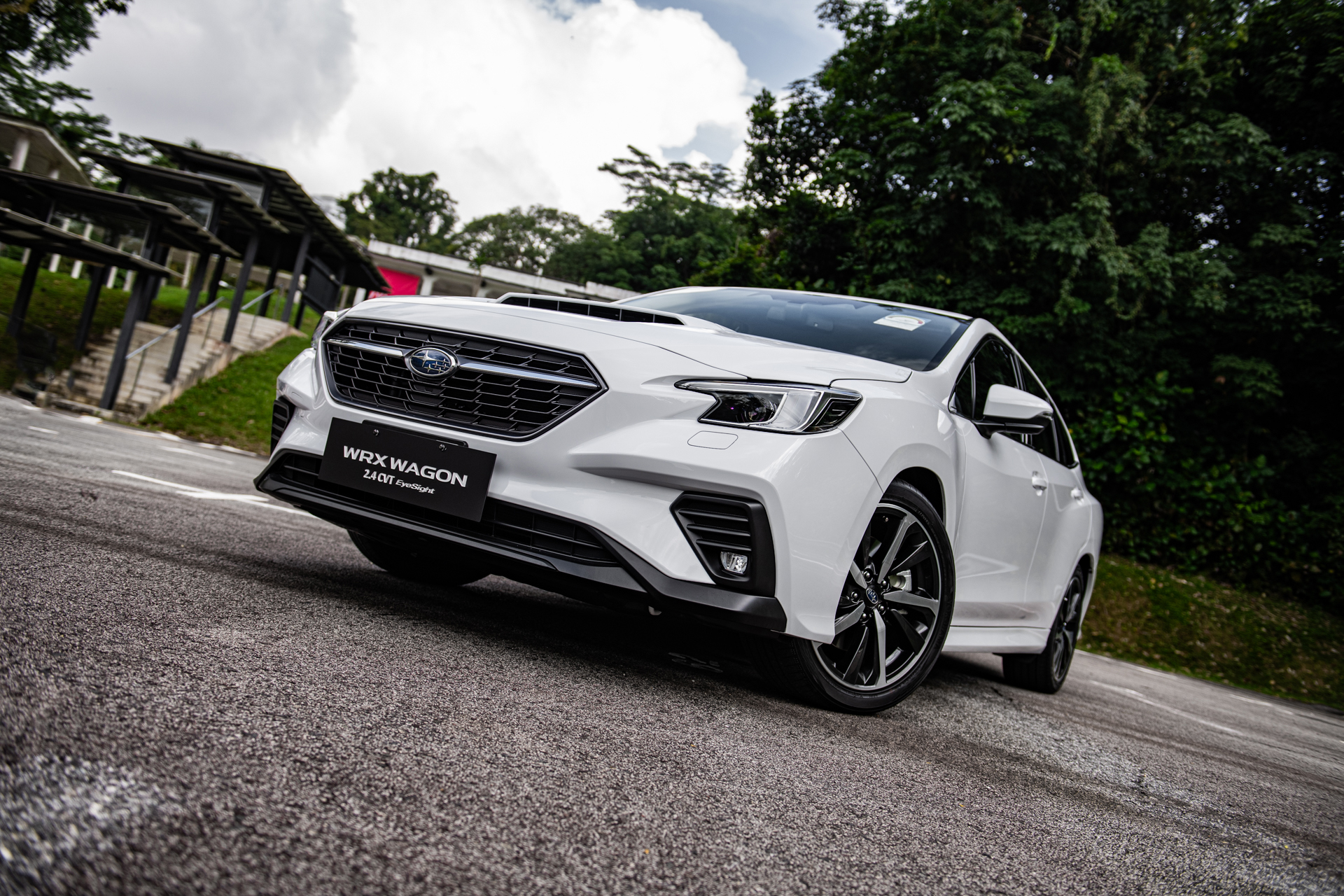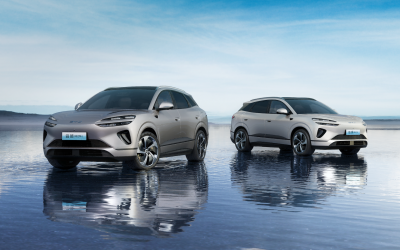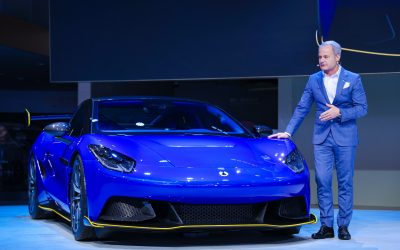The Subaru WRX Wagon is a safe and competent family hauler with surefooted handling abilities.
Subaru. Scooby. WRX. Rexy. Rex. W. Mmmmmm… Memories…
In case you didn’t know, WRX stands for World Rally eXperimental. Back in the day when Subaru was competing in rallies, it was using the Legacy platform with a turbo engine and all-wheel drive. However, Subaru knew that a vehicle with a shorter wheelbase would be needed, and set its sights on building its Impreza platform for rallying. And that’s how we got the birth of the WRX, first launched in Japan in 1992, a year before my GCE O-Levels Examinations.
It’s been awhile since I was last on our roads behind the wheel of a WRX. Having driven the various generations of WRX from GC to GR except the previous-generation VA, and even owning a “blob-eye” GD Rexy sans rear spoiler for seven years, it’s not a stretch to say that I have a soft spot for the Rex.
But this time with the current-generation VB, it’s in my preferred wagon guise which is, in my humble opinion, an option that should always have been made available. But no matter, here we are with the WRX Wagon.
Wagon Life Yo!
Despite sharp creases in the front bumper and muscular haunches over each wheel, the design aesthetic is clean and simple. There’s no need for the WRX Wagon to shout its performance cred, and you won’t find a ginormous wing on its backside either.
The obligatory hood scoop that sets turbo Subarus apart from its naturally aspirated siblings is still here, albeit much more well-integrated into the bonnet.

18-inch rims and tyres fill out the wheel arches nicely, and there are no unpainted plastic cladding around the arches – a welcome relief.
Although the traditional four-pot and two-pot floating brake calipers fore and aft were eschewed in favour of sliding calipers since the GR-generation, they’re more than up to the task of shedding speed in a hurry.




The clean design aesthetic with strategically-placed sharp creases continues to the back where dual tailpipes let those who follow know this ain’t no ordinary Scooby.
In my eyes, the whole wagon design looks and feels more cohesive and mature than its sedan counterpart.



Utility Utilised
Swing that tailgate open to reveal 492 litres of boot space. Need more? Drop the rear seatbacks to liberate a total of 1,430 litres of Ikea- and Giant-shopping friendliness.

Subarus are well known for being simple and utilitarian on the inside, and it’s no different here. The interior is trimmed in black which means easier maintenance and not having to worry so much about dye transfers from clothing such as denim.
However, this does darken the interior somewhat, and the WRX Wagon would benefit immensely from a panoramic sunroof to allow the interior to feel airier.
The rear seatbacks can also be reclined to suit the preference of occupants back here.

Rear legroom is good, and the view out from inside is great – something else Subarus are well known for. A couple of aircon vents in the rear keep occupants cooled, and a couple of USB outlets keep their mobile devices charged.


The front seats, although not the buckets found in the GD WRX, are still very comfortable and supportive.
Electrically adjustable in 10 ways on the driver’s side with two memory settings, and eight-way power adjustable on the passenger’s side, it’s very easy to get into a comfortable position for the journey ahead.

The steering wheel is of a good size and, being adjustable for reach and rake, falls naturally to hand.
Steering-mounted buttons are marked and control myriad functions from adaptive cruise control to infotainment.

Sitting behind the steering wheel is the analogue instrument cluster. This might be disappointing to some out there who expect a fully digital item, but I feel that it is appropriate and keeps with the utilitarian theme.
It’s clear, easy to read and displays the requisite information needed for the test drive. Lovely jubbly.





This then brings us to the infotainment, and this is where some cracks started to show through. Although generally okay to use overall, it is a bit laggy and for some unknown reason, the Bluetooth media screen would not show the track being played. This meant the steering-wheel buttons to advance and rewind tracks were rendered useless.
If, like me, you prefer to enable auto-hold brakes to engage when sitting at a standstill, this needs to be done via the infotainment screen. Hit the car icon at the bottom-left and turn Auto Vehicle Hold (AVH) on. The thing is, it needs to be done every time the car is restarted, which would have been nice if the previous setting was remembered.

Also, the “Fuel Cons.” readout at the top-middle of the screen remained blank for the period of the test drive, which was weird. Probably software glitches, which can hopefully be fixed with an update.
Thankfully, there are physical buttons to control temperature, although fan speed needs to be touchscreen-controlled. Not a big deal though. Simply leave the dual-zone climate control in Auto and adjust the temperature as needed.
Apple CarPlay and Android Auto are available, and it would probably be best to use one of these for infotainment duties.


This WRX Wagon has a continuously variable transmission or CVT, which from what I and many others worldwide have experienced, is one of the best CVT implementations out there.
In manual or M mode, it simulates discreet gears and allows the driver to “bang up and down through the cogs” with the steering-mounted flappy paddles as one sets up for the next corner and blasts out of it using the symmetrical all-wheel drive system.

Slice ‘n Dice
We’d already twirled the wheel of the WRX Wagon in anger at the Subaru Advanced Technology Drive at Changi Exhibition Centre last year, so it was time to see how this WRX would handle daily-driving duties on the streets and highways.
Underhood lies a turbocharged 2.4-litre boxer four-cylinder engine with 275hp and 350Nm of torque. Just for context, STI variants back in the day sported 280hp and around 400Nm of torque, so this Rexy is right up there with ye numbers of yore.

Three drive modes, Intelligent, Sport and Sport Sharp or S#, change the throttle response of the accelerator pedal. For daily-drive duties, Intelligent offers the smoothest experience, and it was in this mode that the whole test drive was conducted.
Moving off the line smoothly and smartly was easy, and the CVT and engine combination were barely perceptible on the move once up to cruising speed. Riding the torque wave from 2,000rpm onwards while leaving the CVT to its own automatic devices saw forward momentum increase smartly, and at no time did I find the WRX Wagon wanting in terms of performance.
The suspension is also very nicely damped for the daily commute, and at no time was the ride jiggly or harsh. This, combined with excellent soundproofing and lack of wind noise means that highway cruising is a comfortable affair. On the highway, EyeSight-guided adaptive cruise control worked well, and one can also enable Adaptive Steering to automatically steer and keep in lane.
The WRX Wagon was only available for a business-day loan, and so was put through my daytime test route encompassing the first two legs of Pure Street and the last two legs of Mostly Highway test routes. Though it cannot be considered as fuel efficient as the top players in the pure internal-combustion engine segment, a weighted and normalised average of 7.52-litres/100km or 13.3km/litre is nothing to scoff at either.
Just for context, my GD WRX used to average 11.1-litres/100km or 9km/litre back in the day.


Naturally, your mileage may vary depending on your specific driving conditions and style, but the above test average handily beats Subaru’s claimed WLTP average of 8.5-litres/100km or 11.8km/litre by a healthy margin.
How is that possible? By driving smoothly, not slowly.
I can’t beat this dead horse enough – good fuel economy is there for the taking if one chooses to anticipate and drive smoothly. Forget jackrabbit starts and abrupt accelerations. Plan ahead and ease off and on the throttle smoothly. There’s even a throttle position readout on the infotainment screen to help in that regard.

Subarus are legendary for their passive and active safety systems. I’m sure you’ve heard many on the internet talking about how they survived or walked away because of their Subaru. Well, I’m one of them.
Subarus are built like tanks and are often referred to as the Volvo of Japan. That’s immensely high praise indeed. If you care about keeping your family as safe as possible in a vehicle, buy a Subaru. This is the reason I put three of my close friends into Subarus back in the day.
So who is this car for?
We have come to the $250,000 question.
Coupled with its surefooted all-weather go-anywhere all-wheel-drive system and handling that will put a smile on your face, the WRX Wagon is there for the family man and/or woman who prefer to eschew sports utility vehicles (SUVs) but appreciates the utility and usability of the extra wagon space.
Someone who cares about safety and doesn’t just want a hum-drum daily driver, but one that can put a smile on one’s face when the opportunity arises, especially in inclement weather. For them, the WRX Wagon awaits.

WRX. Rexy. Rex. W. W for Wagon. Mmmmmm…
Photo Credits: Sean Loo (@auto.driven)
Technical Specifications
Subaru WRX Wagon GT-S 2.4 CVT EyeSight
Engine: 2,387cc turbocharged boxer four-cylinder
Transmission: continuously variable transmission (CVT) automatic
Driveline: asymmetrical all-wheel drive
Power: 275hp @ 5,600rpm
Torque: 350Nm @ 2,000-5,200rpm
0-100km/h: 6.1 seconds (claimed)
Top Speed: 215km/h (claimed)
Fuel Economy (combined): 8.5-litres/100km or 11.8km/litre (claimed)
Fuel Tank Capacity: 63 litres
Kerb Weight: 1,614kg
Price: $249,800 (including COE, accurate at time of writing)
Contact: Subaru Singapore
Read more automotive news at AutoApp, or check out our latest videos on Ignition Labs TV!






